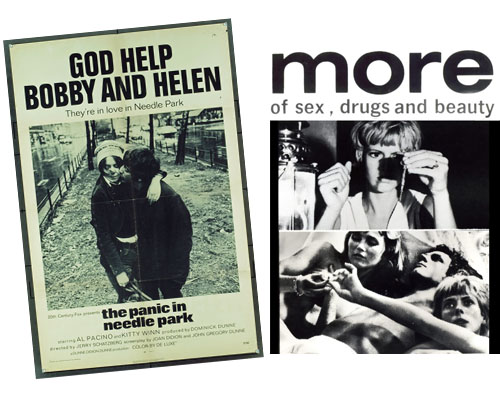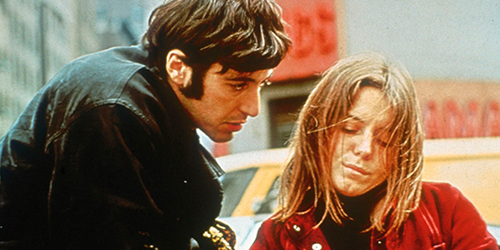Pete's Peek | Love and drugs are a deadly cocktail in More and The Panic in Needle Park

When it comes to movies about the grim reality of addiction, Trainspotting is usually the drug film choice for most film fans, but here’s two classics - re-mastered and re-issued - that are worth seeking out.
First up is Barbet Schroeder’s More, which created quite a stir on its release back in 1969, and it has since gained a cult following - notably because of its Pink Floyd soundtrack and Ibiza setting. Next is director Jerry Schatzberg’s The Panic In Needle Park, which came out two years later and starred Al Pacino in his breakout role, and was equally controversial because of its realistic portrayal of heroin addicts in New York City.
Despite being polar opposites in their geographic locations and cinematic approach, the two films share much in common. They are both about wildly passionate love affairs fuelled by a shared addiction to heroin, and both explore the characters’ relationship with a particular setting.

In More, the island of Ibiza, a picture-postcard paradise of azure blue skies, emerald seas and dazzling white-washed houses, becomes the backdrop for German student Stefan (Klaus Grunberg) to seek out Estelle (Mimsy Farmer), an enigmatic young woman he briefly meets in Paris. Despite warnings to stay clear of the secretive girl, Stefan is spellbound and tracks her down on the island. When Estelle steals a stash of ‘horse’ (the street name for heroin at the time) from local bigwig Wolf, she convinces Stefan to try some. But just as Stefan’s love for Estelle is all consuming, so is the drug. Soon Stefan is hooked and when Wolf hunts the couple down, he is forced to work for Wolf to pay back what Estelle stole.

In stark contrast to Ibiza’s sun-drenched beaches, The Panic in Needle Park takes place in a real-life section of New York City’s Upper West Side, which was infamous for being a haven for drug addicts in the 1970s. Here, with car horns blaring and people racing about, small time hustler Bobby (Al Pacino) introduces the naïve, restless Helen (Kitty Winn) to his world of dealing and scoring. Helen’s growing addiction is played out in coffee shops, seedy hotels, back alleys and the local jail where she and Bobby both end up spending time before returning to life on the streets. But where More ends abruptly, and tragically, Panic in Needle Park shows an addict's life is a constant cycle of big ups and major downs.

Being phobic about needles, the hardest thing for me to watch were the scenes involving actual drug injections (it was these scenes that made the films so controversial when they were first released). And they still retain their power, especially Panic with its inventive documentary approach and all-too realistic performances from Pacino and Winn (who won a Best Actress award at Cannes for her role).
Panic in Needle Park and More may be relentlessly grim in their outlook, but they still fascinate and their themes are just as valid in today's society. In fact, they should be mandatory in any anti-drug campaigns in schools.
The latest updates, reviews and unmissable series to watch and more!
The Dual Format BFI release of More (out 19 September) contains a re-mastered print of the film and a newly commissioned 17-minute documentary on the story behind it; plus trailers for Schroeder’s films other including La Vallée (see my review here of the excellent BFI release here), illustrated booklet, biographies, and notes on the Pink Floyd soundtrack.
The new Second Sight release of The Panic in Needle Park signals the films’ first-ever UK widescreen release, and includes some very informative interviews with director Schatzberg (who originally tested Robert De Niro for the role of Bobby), cinematographer Adam Holender (who also lensed Midnight Cowboy), and writer Joan Didion (who talks about what is was like researching the script in the actual locations which have now been totally gentrified).
More is released through BFI The Panic in Needle Park is released through Second Sight
http://www.youtube.com/watch?v=RV-M-ryiDJw&fs=1
http://youtube.com/v/eNeN9ZU2CSM

